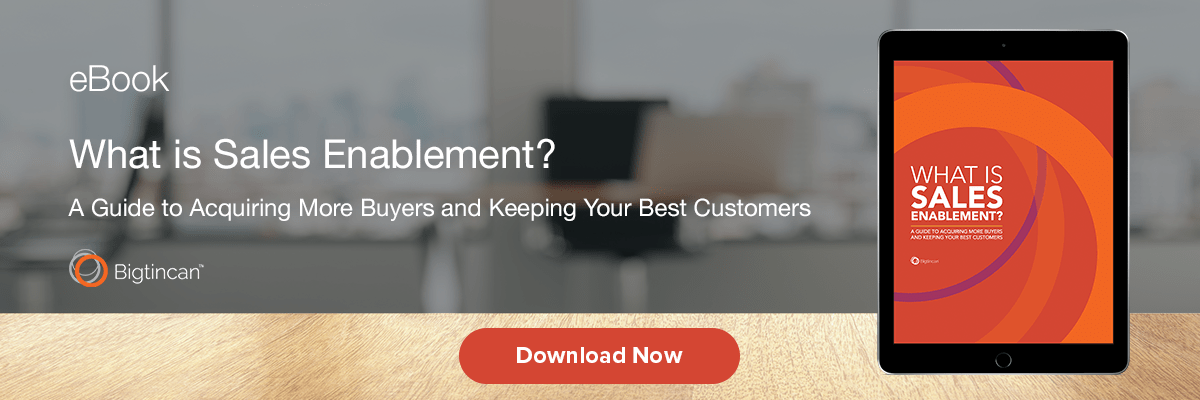Much like the 14-year old who grew a foot taller and traded out their toys for a guitar in the blink of an eye, the definition of sales enablement software has gone on a swift and evolutionary journey the past couple of years.
What started as a niche SaaS product for forward-thinking sales and marketing teams went from “nice to have” to essential to the sales process and tech stack within a brief period. The user base has even expanded beyond sales and marketing to include all revenue-generating and customer-facing roles.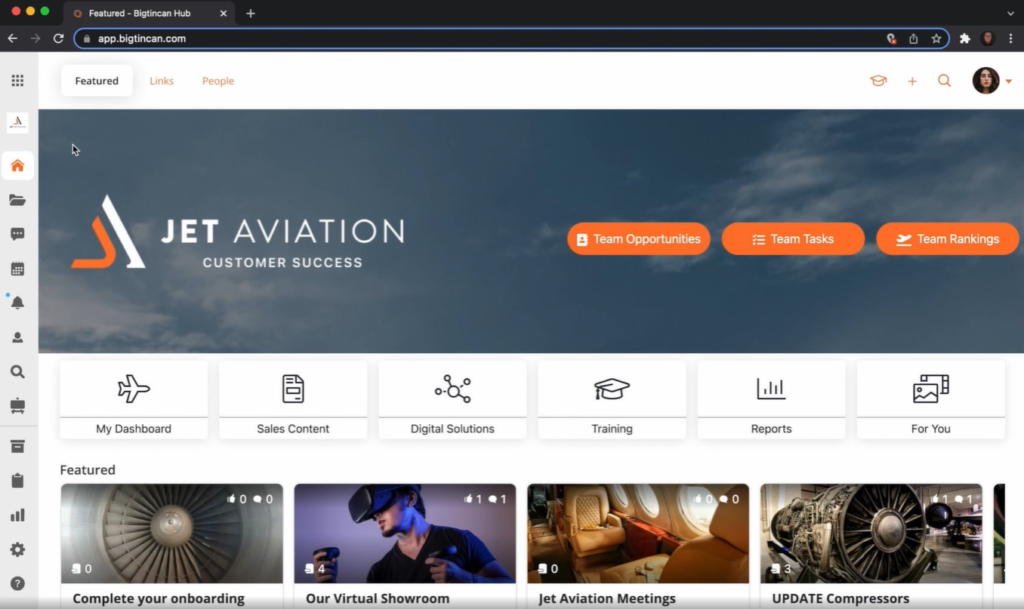
Content Hub customized for Jet Aviation Customer Success team
So where does the definition stand after so much change? And what does it mean for your business, whether you’re already using sales enablement software or just getting started? This article breaks it down for you.
Sales enablement vs sales enablement software
Before diving into the technology, it is important to first differentiate the practice and process of sales enablement from sales enablement software.
Sales enablement is the process of making customer-facing teams able to efficiently move buyers through the sales process to the point where they can make the best buying decision.
The best sales enablement strategy involves all customer-facing roles. This includes customer support, field services, and in a less direct way, the human resources and IT teams that implement the training programs and technology needed to drive initiatives forward.
Sales enablement is also a defined role tasked with helping the sales organization perfect (or at least improve) that process through the strategic use of training, content, and tools.
You can get a comprehensive overview of sales enablement in this eBook:
Sales enablement vs sales operations
It’s also essential not to confuse sales enablement with sales operations.
While both have the same goal — to increase revenue and selling success — sales enablement has a much broader focus than sales operations.
Sales operations handle data, trends, and sales forecasting. Sales ops is typically a separate function from sales enablement within a sales organization more focused on data analysis.
A sales ops team or professional may be involved in the backend implementation of a sales enablement tool and may use sales enablement data as part of their analyses, but their work typically runs separately from the sales enablement team.
A good sales enablement strategy should include sales operations, but the two terms are not interchangeable.
Related: Beyond CRM: 15 Sales Operations Tools to Optimize Sales Processes and Productivity
What is sales enablement software?
Sales enablement software, on the other hand, is the technology or tools used to simplify, automate, and scale sales enablement processes. The reason the practice and the technology are so intertwined is that at its core, sales enablement equips those in customer-facing roles with the necessary tools and materials to effectively engage with clients and prospects.
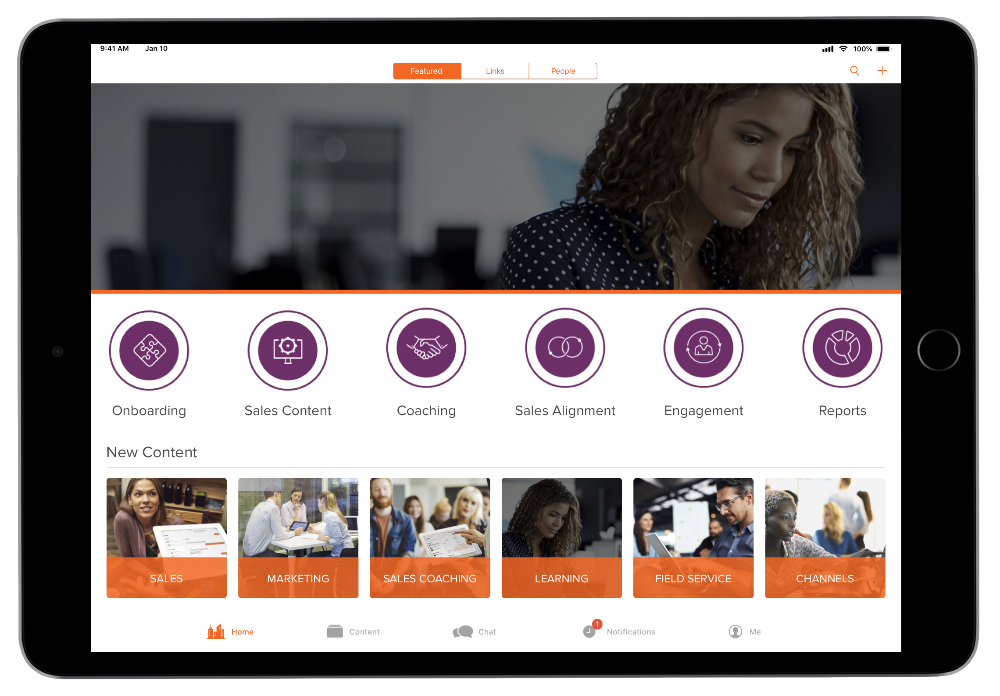
Content Hub on a tablet
These tools most often include access to information and content that engage buyers throughout the customer journey, but can expand to include any tools your specific customer success or sales teams may need, such as sales coaching and training, conversation intelligence, document automation, AI recommendations, communication and collaboration tools, and extended reality technology.
Sales Enablement ensures buyers are engaged at the right time and place, and with the right assets by well-trained client-facing staff to provide a world-class experience along the customer’s journey.
— The Sales Enablement Society (SES)
The SES adds that “while utilizing the right sales and performance management technologies, in addition to synergizing cross-organization collaboration, sales enablement optimizes the selling motion in order to increase pipeline, move opportunities forward, and win bigger deals more efficiently to drive profitable growth.”
See also: Sales enablement platform walkthrough — how sales reps actually use sales enablement every day
Sales enablement vs revenue enablement
Changes in sales enablement industry terminology have kept pace with the evolving definition and user base. For someone new to the industry, the jargon (like all jargon) can be a bit confusing.
Here’s what you need to know:
- Terms like revenue enablement and go-to-market enablement have been used interchangeably with sales enablement for years, with the latter being less common
- Several subcategories exist under the umbrella of sales enablement, including content management, sales engagement, sales automation, sales readiness, and sales learning and coaching
- Gartner officially redefined “sales enablement” as “revenue enablement” in 2022, noting the expanding user base and capabilities of the products in the market in their reasoning
- Many customers still consider sales enablement and revenue enablement to be separate entities depending on what is offered (according to a recent anonymous survey of 600 + sales enablement users conducted by Bigtincan)
Here’s what Gartner had to say in their 2022 Market Guide for Revenue Enablement Platforms:
Revenue enablement platforms unite sales enablement functions and customer-facing revenue processes. They encompass revenue-generating roles including customer success, marketing and presales. The platforms have capabilities for digital content, training and coaching or, via open APIs, integrate with complementary vendor offerings. They integrate with sales force automation (SFA) or marketing automation platforms, feature buyer engagement analysis, and measure and build role skills improving commercial execution.
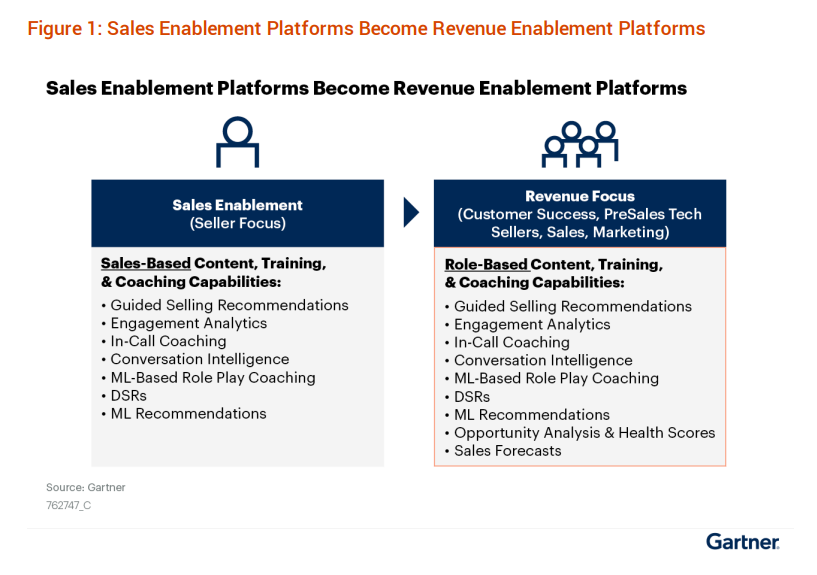
Read the full Gartner Market report to better understand how different roles use enablement tools, the offerings of different platform vendors, the latest developments in enablement technology, and which technology to adopt now to stay ahead of buyer behaviors.
Two important additions to the sales enablement definition, which help add up to Gartner’s definition of revenue enablement, are conversational intelligence and digital sales rooms (DSRs). Gartner analysts predict that, “By 2025, 50% of B2B sales organizations will record 75% of conversations with buyers,” and that, “By 2026, 30% of B2B sales cycles will be primarily run through a DSR, which will be used to manage the customer life cycle.”
Further reading:
- Best digital sales rooms for 2023 (and how to use them)
- How to use conversation intelligence in sales
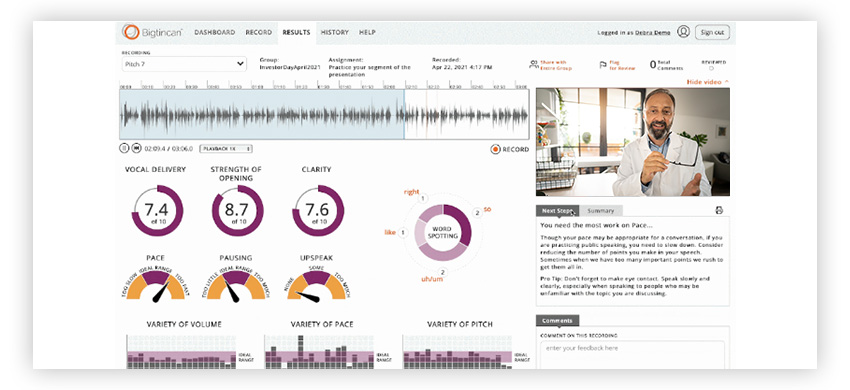
VoiceVibes conversation intelligence analysis
Defining sales enablement at your organization
When considering these definitions, you may want to ask, “Who really defines the market? Analysts or buyers? And which one matters most to my business?” Because with different definitions continuing to compete in the space, there is still room for interpretation.
What matters most is what enablement can do for you — but the sheer growth and expansion of this software category is proof positive that sales enablement technology is helping companies win more and be more productive on a daily basis.
So, how will you define sales enablement?
